
Abel Gance
Nacimiento : 1889-10-25, Paris, France
Muerte : 1981-11-10
Historia
Abel Gance was a French film director, producer, writer and actor. A pioneer in the theory and practice of montage, he is best known for three major silent films: J'accuse (1919), La Roue (1923), and Napoléon (1927).
He was born in Paris in 1889. In 1909, he acted in his first film. He also wrote scenarios, and often sold them to Gaumont. During this period he was diagnosed with tuberculosis, fatal at the time, but he recovered. In 1911, with some friends he established a production company, Le Film Français, and began directing his own films.
With the outbreak of WW I, rejected by the army on medical grounds, he started writing and directing for a new film company, Film d'Art until 1918, making over a dozen successful films. Charles Pathé underwrote his next film, J'accuse (1919), in which Gance confronted the waste and suffering which the war had brought.
In 1920, he developed La Roue. He brought an unprecedented level of energy and imagination to the technical realization of his story, employing elaborate editing techniques and innovative use of rapid cutting which made the film highly influential. The finished film ran for nearly nine hours, but was edited down for distribution.
In 1921, Gance visited America to promote J'accuse. He met D. W. Griffith, whom he had long admired. He was also offered a contract with MGM but turned it down.
He then embarked on his greatest project, a six-part life of Napoléon. Only the first part was completed, tracing his early life, through the Revolution, up to the invasion of Italy, but even this occupied a vast canvas with meticulously recreated historical scenes and scores of characters. The film was full of experimental techniques, combining rapid cutting, hand-held cameras, superimposition of images, and, in wide-screen sequences, shot using a system he called Polyvision needing triple cameras (and projectors), achieved a spectacular panoramic effect, including a finale in which the outer two film panels were tinted blue and red, creating a widescreen image of a French flag. The original version ran for around 6 hours. A shortened version received a triumphant première at the Paris Opéra in April 1927.
Throughout his life he kept returning to Napoléon, editing his footage, and as a result the original 1927 film was lost from view for decades. The dedicated work of the film historian Kevin Brownlow produced a five-hour version, still incomplete but fuller than anyone had seen since the 1920s. It was presented at the Telluride Film Festival in 1979, and the occasion brought a belated triumph to Gance's career, and made his name known to a worldwide audience.
In the assessment of Kevin Brownlow, "...[Abel Gance] made a fuller use of the medium than anyone before or since". As well as his multiscreen ventures with Polyvision, he explored the use of superimposition of images, extreme close-ups, fast rhythmic editing, and he made the camera mobile in unorthodox ways – hand-held, mounted on wires or a pendulum, or even strapped to a horse. He also made early experiments with the addition of sound to film, and with filming in color and in 3-D. There were few aspects of film technique that he did not seek to incorporate in his work, and his influence was acknowledged by contemporaries and later by the French New Wave film-makers.

Director
Abel Gance's 1971 sound edition of his epic 1927 'Napoleon', which contains much of the silent original, with new material shot and added in both 1965 and 1971, and with sound synchronization from both the 1932 reissue and this version.

BBC documentary on the long and flamboyant career of French filmmaker Abel Gance.

Screenplay
Luis XIII (1601-1643) es el Rey de Francia, pero está dominado por el cardenal Richelieu, que urde toda clase de intrigas palaciegas, sobre todo con el fin de desacreditar a la reina Ana de Austria. En medio se encuentran d’Artagnan y los mosqueteros del Rey, Cyrano y los cadetes de Gascuña y los guardias del Cardenal. D’Artagnan y Cyrano, los dos mejores espadachines de la época, se hacen amigos. El ingenioso Cyrano se enamora de Ninon de Lenclos y d’Artagnan de Marion de l’Orme, dos bellas damas de la corte.

Director
Luis XIII (1601-1643) es el Rey de Francia, pero está dominado por el cardenal Richelieu, que urde toda clase de intrigas palaciegas, sobre todo con el fin de desacreditar a la reina Ana de Austria. En medio se encuentran d’Artagnan y los mosqueteros del Rey, Cyrano y los cadetes de Gascuña y los guardias del Cardenal. D’Artagnan y Cyrano, los dos mejores espadachines de la época, se hacen amigos. El ingenioso Cyrano se enamora de Ninon de Lenclos y d’Artagnan de Marion de l’Orme, dos bellas damas de la corte.

himself
The life and work of Abel Gance as told by himself. Includes extracts from many of his films and considers his contribution to the cinema.
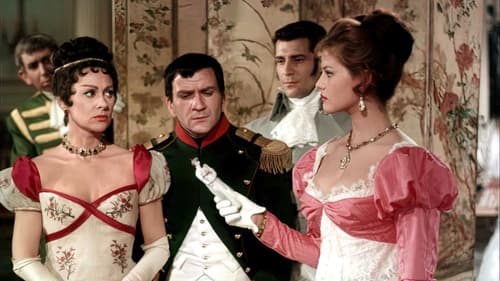
Writer
En la batalla de Austerlitz (2-XII- 1805) Napoleón obtuvo una de sus más brillantes victorias contra las potencias absolutistas europeas. Más de tres décadas después de la publicación de su biografía sobre Napoleón, Abel Gance volvió a inspirarse en la figura de Bonaparte para dirigir esta épica y colosal reconstrucción de la batalla de Austerlitz (o de los Tres Emperadores), en la que Bonaparte derrotó a los austríacos y a los rusos. Fue producida por Alexander Salkind (Superman) y contó con un extenso reparto de estrellas internacionales.

Director
En la batalla de Austerlitz (2-XII- 1805) Napoleón obtuvo una de sus más brillantes victorias contra las potencias absolutistas europeas. Más de tres décadas después de la publicación de su biografía sobre Napoleón, Abel Gance volvió a inspirarse en la figura de Bonaparte para dirigir esta épica y colosal reconstrucción de la batalla de Austerlitz (o de los Tres Emperadores), en la que Bonaparte derrotó a los austríacos y a los rusos. Fue producida por Alexander Salkind (Superman) y contó con un extenso reparto de estrellas internacionales.

Director
A portmanteau work in four segments,designed to illustrate the expressive possibilities of director Abel Gance,s creation, Polyvision, which preceded the American invention of Cinerama, and used three screens to present a drama of simultaneous images.

Screenplay
Durante el reinado de Luis X, el Capitán Buridan llega a París por la época en que todos los días se descubrían cadáveres flotando en el Sena en las proximidades de la Torre de Nesle. Los asesinatos se cometían después de las orgías que allí tenían lugar. El Capitán Burídan así como Phílippe d'Aulnay, hermano del favorito de la Reina, Gaultier d'Aulnay, son conducidos a una de esas orgías y a la emboscada que le sucedía. Phílippe es asesinado no sin antes identificar a la Reina Margarita de Borgoña...

Director
Durante el reinado de Luis X, el Capitán Buridan llega a París por la época en que todos los días se descubrían cadáveres flotando en el Sena en las proximidades de la Torre de Nesle. Los asesinatos se cometían después de las orgías que allí tenían lugar. El Capitán Burídan así como Phílippe d'Aulnay, hermano del favorito de la Reina, Gaultier d'Aulnay, son conducidos a una de esas orgías y a la emboscada que le sucedía. Phílippe es asesinado no sin antes identificar a la Reina Margarita de Borgoña...
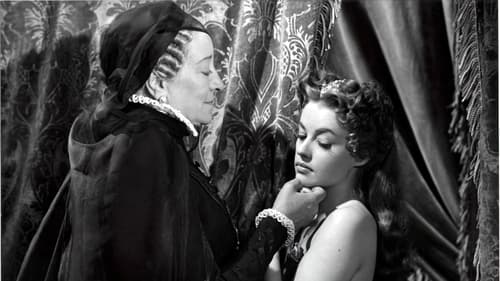
Writer

Writer
Out of love for an actress, Isabelle, the Baron de Sigognac joins a traveling troop en route to Paris. When an actor dies, he takes over his role: that of Captain Fracasse.

Director
Out of love for an actress, Isabelle, the Baron de Sigognac joins a traveling troop en route to Paris. When an actor dies, he takes over his role: that of Captain Fracasse.

Writer
Vénus aveugle (Blind Venus) is a 1941 French film melodrama, directed by Abel Gance, and one of the first films to be undertaken in France during the German occupation. Although the film is not set in any specified period, Gance wanted it to be seen as relevant to the contemporary situation in France. He wrote, "...La Vénus aveugle is at the crossroads of reality and legend... The heroine ... gradually sinks deeper and deeper into despair. Only when she has reached the bottom of the abyss does she encounter the smile of Providence that life reserves for those who have faith in it, and she can then go serenely back up the slope towards happiness. If I have been able to show in this film that elevated feelings are the only force that can triumph over Fate, then my efforts will not have been in vain."

Director
Vénus aveugle (Blind Venus) is a 1941 French film melodrama, directed by Abel Gance, and one of the first films to be undertaken in France during the German occupation. Although the film is not set in any specified period, Gance wanted it to be seen as relevant to the contemporary situation in France. He wrote, "...La Vénus aveugle is at the crossroads of reality and legend... The heroine ... gradually sinks deeper and deeper into despair. Only when she has reached the bottom of the abyss does she encounter the smile of Providence that life reserves for those who have faith in it, and she can then go serenely back up the slope towards happiness. If I have been able to show in this film that elevated feelings are the only force that can triumph over Fate, then my efforts will not have been in vain."
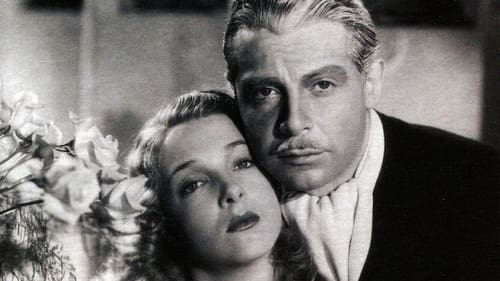
Scenario Writer
In pre-World Ward I in Paris, a budding artist, Pierre LeBlanc, falls in love and marries Janine, a dressmaker's assistant. Pierre has a flair for designing clothes, and he and his bride live in a blissful paradise, until the war breaks out and he becomes a soldier. Janine dies in childbirth and, no longer desiring to live, Pierre volunteers for a dangerous patrol behind German lines. While recuperating in the hospital from a wound he received on the mission, Pierre spends his time drawing sketches of dresses. He becomes rich and famous after the war. Years later, after devoting himself to his daughter, Pierre seeks a marriage with a girl no older than his daughter. A conflict develops and to ensure his daughter's happiness, Pierre sacrifices his own plans.

Director
In pre-World Ward I in Paris, a budding artist, Pierre LeBlanc, falls in love and marries Janine, a dressmaker's assistant. Pierre has a flair for designing clothes, and he and his bride live in a blissful paradise, until the war breaks out and he becomes a soldier. Janine dies in childbirth and, no longer desiring to live, Pierre volunteers for a dangerous patrol behind German lines. While recuperating in the hospital from a wound he received on the mission, Pierre spends his time drawing sketches of dresses. He becomes rich and famous after the war. Years later, after devoting himself to his daughter, Pierre seeks a marriage with a girl no older than his daughter. A conflict develops and to ensure his daughter's happiness, Pierre sacrifices his own plans.

Director
What was it about opera diva Grace Moore that attracted the attention of filmdom's top directors? Moore's 1937 American movie vehicle When You're in Love had been directed by Josef Von Sternberg; two years later, her French starrer Louise was helmed by no less than Abel Gance, who a decade earlier had revolutionized the "historical epic" genre with the awesome Napoleon. There was, however, little that was revolutionary in this cinemadaption of Gustave Charpentier's opera. Moore plays Louise, a poor seamstress who is led astray by the rakish Julien (Georges Thill). After falling from grace (no pun intended), our heroine is rescued by her understanding father (Andre Pernet), who demonstrates his forgiveness by singing to her (it is, after all, an opera). Though it played to enthusiastic crowds in both London and Paris, Louise turned out to be Grace Moore's final film; conversely, Abel Gance continued to make commercial potboilers well into the 1970s.

Director
The woman thief evades a young lady who is onto his game, but then tries his wiles elsewhere on a married woman by attempting to compromise and ruin the husband she is happy with.

Writer
Dos hombres -uno casado y el otro, amante de la mujer del primero- coinciden en las trincheras durante la Primera Guerra Mundial y comparten los horrores de la batalla. Remake del propio Gance de una obra suya de 1919.

Director
Dos hombres -uno casado y el otro, amante de la mujer del primero- coinciden en las trincheras durante la Primera Guerra Mundial y comparten los horrores de la batalla. Remake del propio Gance de una obra suya de 1919.
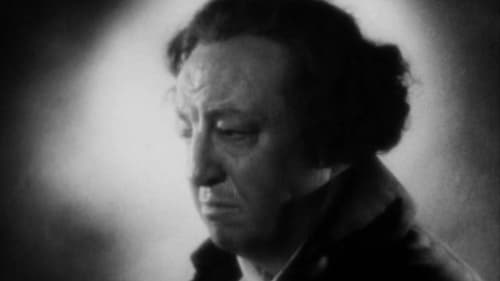
Writer
Lyrical biography of the classical composer, depicted as a romantic hero, an accursed artist.

Director
Lyrical biography of the classical composer, depicted as a romantic hero, an accursed artist.
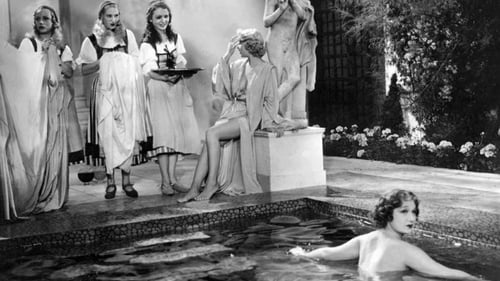
Writer
French silent film pioneer Abel Gance directs this 1935 classic about Lucrezia Borgia, her brother, Cesare. and her father, Pope Alexander VI -- one of history's most ruthless and ambitious crime families.

Director
French silent film pioneer Abel Gance directs this 1935 classic about Lucrezia Borgia, her brother, Cesare. and her father, Pope Alexander VI -- one of history's most ruthless and ambitious crime families.

Writer
A hero of the Paris streets is recruited for a conspiracy against Mazarin in the court of the King, but he reveals the subversive plot to Anne of Austria.

Director
A hero of the Paris streets is recruited for a conspiracy against Mazarin in the court of the King, but he reveals the subversive plot to Anne of Austria.
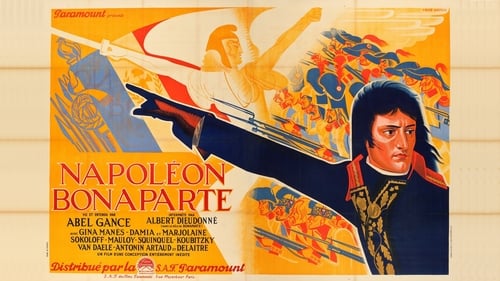
Editor
A second version of Gance's Napoléon, with sound.

Screenplay
A second version of Gance's Napoléon, with sound.

Saint-Just
A second version of Gance's Napoléon, with sound.

Director
A second version of Gance's Napoléon, with sound.

Screenplay

Director

Director
Alexandre Dumas' romantic novel Lady of the Camelias (more popularly known as Camille) was filmed twice in 1953, first in Argentina, then in France. The Argentine film was heavily modernized, while the French version returns to Dumas' 19th-century milieu. Micheline Presle is excellent as Marguerite, the gorgeous courtesan who flits from man to man until she finds true love in the form of the much-younger Armand (Rolande Alexandre). Though he is willing to marry her despite her past, she is persuaded to forsake him, lest his reputation be ruined. The story then wends its way towards its famous tragic finale, as the consumptive Marguerite is permitted a few brief moments of happiness before her flame is permanently extinguished. Advertised as the seventh version of the Dumas classic, La Dame aux Camelias was certainly not the last.

Director
Didier Méreuil, affectionately called Poliche, is in love with Rosine, a beautiful girl, so he does everything to please her. She does not love him, and accepts a seductive airplane pilot who proposes to her. One day, she discovers that the funny man is just a front behind which there is a serious Didier. She will try to make up and live with him - but the gap between them is already too large.
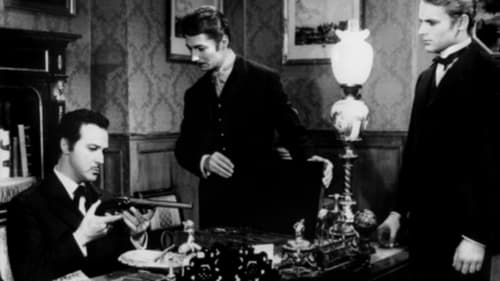
Screenplay
A young noblewoman is unhappy about needing to marry the village ironmaster for financial reasons, but later comes to appreciate her husband.

Writer
One of the most popular melodrama films directed by Abel Gance. A paranoide, fanatical and obsessively jealous husband obducts his own son to bully his wife.

Director
One of the most popular melodrama films directed by Abel Gance. A paranoide, fanatical and obsessively jealous husband obducts his own son to bully his wife.
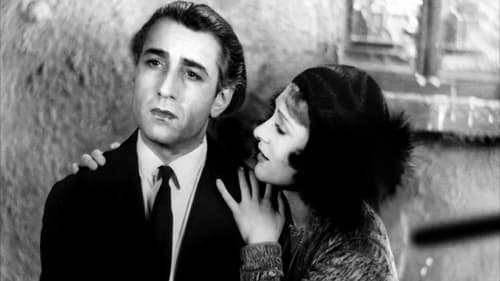
Director
The plot concerns a comet hurling toward Earth on a collision course and the different reactions to people on the impending disaster.

Jean Novalic
The plot concerns a comet hurling toward Earth on a collision course and the different reactions to people on the impending disaster.

Screenplay
The plot concerns a comet hurling toward Earth on a collision course and the different reactions to people on the impending disaster.

himself
An 18-minute silent documentary on the making of the 1931 Abel Gance directed film, "La Fin Du Monde".

Story
Napoleon at Saint Helena (German: Napoleon auf Sankt Helena) is a 1929 German silent historical film directed by Lupu Pick and starring Werner Krauss, Hanna Ralph and Albert Bassermann. The film depicts the final years of Napoleon between 1815 and 1821 during his period of exile on the British Atlantic island of Saint Helena following his defeat at Waterloo.
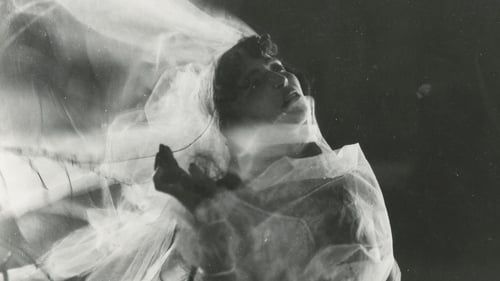
Un hombre llega a la mansión de su amigo Usher y la esposa de éste, Madelaine. Usher está pintando un retrato de su esposa, pero, al tiempo que transmite la esencia vital al lienzo, la mujer va desfalleciendo. Cuando perece, será enterrada en la cripta familiar, pero Usher no cree en verdad en la condición mortal de su amada... Adaptación libre de la historia de Poe.

Director
Marines et cristeaux is a silent film from 1928
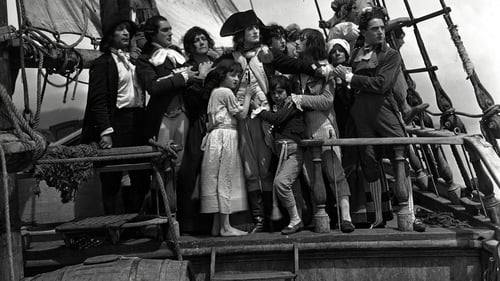
Editor
El golpe de estado del 18 Brumario de 1799, que significó el fin de la Revolución Francesa, puso el poder en manos de Bonaparte, el más prestigioso de los generales franceses, sobre todo después de sus brillantes campañas en Italia y en Egipto. Desde 1799, Napoleón no sólo fomentó la difusión de las ideas revolucionarias, sino que, además, se lanzó a la conquista de Europa. En 1804 se autoproclamó emperador de Francia con el nombre de Napoleón I.

Writer
El golpe de estado del 18 Brumario de 1799, que significó el fin de la Revolución Francesa, puso el poder en manos de Bonaparte, el más prestigioso de los generales franceses, sobre todo después de sus brillantes campañas en Italia y en Egipto. Desde 1799, Napoleón no sólo fomentó la difusión de las ideas revolucionarias, sino que, además, se lanzó a la conquista de Europa. En 1804 se autoproclamó emperador de Francia con el nombre de Napoleón I.

Director
El golpe de estado del 18 Brumario de 1799, que significó el fin de la Revolución Francesa, puso el poder en manos de Bonaparte, el más prestigioso de los generales franceses, sobre todo después de sus brillantes campañas en Italia y en Egipto. Desde 1799, Napoleón no sólo fomentó la difusión de las ideas revolucionarias, sino que, además, se lanzó a la conquista de Europa. En 1804 se autoproclamó emperador de Francia con el nombre de Napoleón I.

Louis Antoine Léon de Saint-Just
El golpe de estado del 18 Brumario de 1799, que significó el fin de la Revolución Francesa, puso el poder en manos de Bonaparte, el más prestigioso de los generales franceses, sobre todo después de sus brillantes campañas en Italia y en Egipto. Desde 1799, Napoleón no sólo fomentó la difusión de las ideas revolucionarias, sino que, además, se lanzó a la conquista de Europa. En 1804 se autoproclamó emperador de Francia con el nombre de Napoleón I.

Producer
Max accepts a wager that he cannot remain in a haunted castle for one hour (11 PM to midnight) without crying for help. As soon as he arrives he encounters strange and nightmarish visions, but he is nevertheless on the verge of winning the bet when a phone-call brings startling news.

Writer
Max accepts a wager that he cannot remain in a haunted castle for one hour (11 PM to midnight) without crying for help. As soon as he arrives he encounters strange and nightmarish visions, but he is nevertheless on the verge of winning the bet when a phone-call brings startling news.

Director
Max accepts a wager that he cannot remain in a haunted castle for one hour (11 PM to midnight) without crying for help. As soon as he arrives he encounters strange and nightmarish visions, but he is nevertheless on the verge of winning the bet when a phone-call brings startling news.
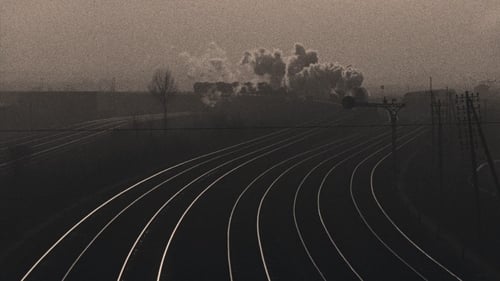
Producer
La película se abre con un espectacular choque de trenes montado a partir de cortes muy rápidos, tan revolucionario en su tiempo como la llegada del tren a la estación filmada por Lumière en 1895. El ferroviario Sisif salva a Norma del choque y la educa como si fuera hija suya. Pero tanto él como su hijo Elie se enamoran de ella. Entonces Sisif decide casarla con un hombre rico, pero ella está enamorada de Elie. Son claras las referencias a la tragedia griega (Sisif es Sísifo y acabará ciego a causa del deseo incestuoso). La metáfora central de la película es la rueda: la rueda del destino, la rueda del deseo y la rueda de la misma película... (FILMAFFINITY)

Editor
La película se abre con un espectacular choque de trenes montado a partir de cortes muy rápidos, tan revolucionario en su tiempo como la llegada del tren a la estación filmada por Lumière en 1895. El ferroviario Sisif salva a Norma del choque y la educa como si fuera hija suya. Pero tanto él como su hijo Elie se enamoran de ella. Entonces Sisif decide casarla con un hombre rico, pero ella está enamorada de Elie. Son claras las referencias a la tragedia griega (Sisif es Sísifo y acabará ciego a causa del deseo incestuoso). La metáfora central de la película es la rueda: la rueda del destino, la rueda del deseo y la rueda de la misma película... (FILMAFFINITY)

Writer
La película se abre con un espectacular choque de trenes montado a partir de cortes muy rápidos, tan revolucionario en su tiempo como la llegada del tren a la estación filmada por Lumière en 1895. El ferroviario Sisif salva a Norma del choque y la educa como si fuera hija suya. Pero tanto él como su hijo Elie se enamoran de ella. Entonces Sisif decide casarla con un hombre rico, pero ella está enamorada de Elie. Son claras las referencias a la tragedia griega (Sisif es Sísifo y acabará ciego a causa del deseo incestuoso). La metáfora central de la película es la rueda: la rueda del destino, la rueda del deseo y la rueda de la misma película... (FILMAFFINITY)

Director
La película se abre con un espectacular choque de trenes montado a partir de cortes muy rápidos, tan revolucionario en su tiempo como la llegada del tren a la estación filmada por Lumière en 1895. El ferroviario Sisif salva a Norma del choque y la educa como si fuera hija suya. Pero tanto él como su hijo Elie se enamoran de ella. Entonces Sisif decide casarla con un hombre rico, pero ella está enamorada de Elie. Son claras las referencias a la tragedia griega (Sisif es Sísifo y acabará ciego a causa del deseo incestuoso). La metáfora central de la película es la rueda: la rueda del destino, la rueda del deseo y la rueda de la misma película... (FILMAFFINITY)

Producer
Directed by Robert Boudrioz.
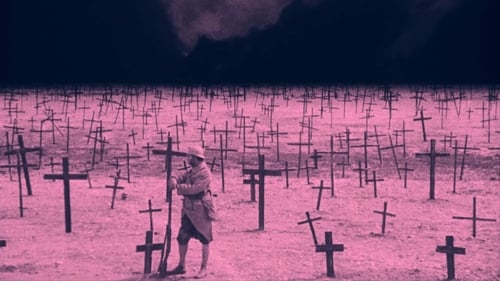
Editor
La historia de dos hombres, uno casado, y el otro amante de la esposa del primero, que se reúnen en las trincheras de la Primera Guerra Mundial, y cómo esta historia se convierte en un pequeño ejemplo de los horrores de la guerra.

Screenplay
La historia de dos hombres, uno casado, y el otro amante de la esposa del primero, que se reúnen en las trincheras de la Primera Guerra Mundial, y cómo esta historia se convierte en un pequeño ejemplo de los horrores de la guerra.

Director
La historia de dos hombres, uno casado, y el otro amante de la esposa del primero, que se reúnen en las trincheras de la Primera Guerra Mundial, y cómo esta historia se convierte en un pequeño ejemplo de los horrores de la guerra.

Writer
Composer Enrid Damor knows nothing of the past life of his new wife Eve Dinant : she lived as a debauchee with an adventurer, Fred Ryce. Fred Ryce meets Damor's daughter, Claire, and tries to marries her. He blackmails Eve. Enric learns something about her and Fred and composes a symphony to express his pain... The Tenth Symphony is considered the first major film of the Impressionist movement.

Director
Composer Enrid Damor knows nothing of the past life of his new wife Eve Dinant : she lived as a debauchee with an adventurer, Fred Ryce. Fred Ryce meets Damor's daughter, Claire, and tries to marries her. He blackmails Eve. Enric learns something about her and Fred and composes a symphony to express his pain... The Tenth Symphony is considered the first major film of the Impressionist movement.

Writer
Film by Abel Gance.

Director
Film by Abel Gance.

Writer
A journalist attempt to stop a mysterious criminal : "Barbe rousse".

Director
A journalist attempt to stop a mysterious criminal : "Barbe rousse".

Writer
Hardly one of French filmmaker Abel Gance's masterpieces, The Torture of Silence nevertheless has more dramatic and psychological value than your average romantic-triangle tale. Simply put, the film concerns a doctor, his wife, and his brother. The doctor, a specialist in pediatrics, has no time for his wife Marthe. She seeks solace in the arms of his brother. Unable to keep up the charade, Marthe attempts to shoot herself, but it is her lover who is mortally wounded.

Director
Hardly one of French filmmaker Abel Gance's masterpieces, The Torture of Silence nevertheless has more dramatic and psychological value than your average romantic-triangle tale. Simply put, the film concerns a doctor, his wife, and his brother. The doctor, a specialist in pediatrics, has no time for his wife Marthe. She seeks solace in the arms of his brother. Unable to keep up the charade, Marthe attempts to shoot herself, but it is her lover who is mortally wounded.

Writer
A young girl marries a financier knowing he has only a short time to live, so she can inherit his money.Her lover, who has made a fortune away in America, returns and wants to hasten the financier's death.

Director
A young girl marries a financier knowing he has only a short time to live, so she can inherit his money.Her lover, who has made a fortune away in America, returns and wants to hasten the financier's death.

Writer
Hopson, a prestigious scientist, studies the effect of snake venom to cure many diseases of mankind. His son enlists in the army when the Great War breaks out. A series of circumstances will lead the scientist to change his way of thinking about values and principles that until then he had as immovable.

Director
Hopson, a prestigious scientist, studies the effect of snake venom to cure many diseases of mankind. His son enlists in the army when the Great War breaks out. A series of circumstances will lead the scientist to change his way of thinking about values and principles that until then he had as immovable.

Writer
Le fou de la falaise is a 1916 silent film

Director
Le fou de la falaise is a 1916 silent film

Writer
Le périscope is a 1928 film

Director
Le périscope is a 1928 film

Writer
Un drame au château d'Acre is a 1915 silent short

Director
Un drame au château d'Acre is a 1915 silent short

Writer
Guards are posted to protect various important figures who are threatened with a phone call, that by 10 p.m. the following night they will be dead.Somehow they still meet their deaths, despite the protection.

Director
Guards are posted to protect various important figures who are threatened with a phone call, that by 10 p.m. the following night they will be dead.Somehow they still meet their deaths, despite the protection.

Writer
L'héroïsme de Paddy is a 1915 silent film

Director
L'héroïsme de Paddy is a 1915 silent film

Writer
A scientist develops a powder that he believes will have the effect of distorting reality for those who take it. To test its effect tries it out on his assistant, a dog, himself and two young couples.

Director
A scientist develops a powder that he believes will have the effect of distorting reality for those who take it. To test its effect tries it out on his assistant, a dog, himself and two young couples.

Writer
L'infirmière is a 1914 silent film.

Screenplay
A mad sculptor, searching for the perfect realization of "the mask of horror", places himself in front of a mirror after smearing blood over himself with the glass of an oil lamp. He then swallows a virulent poison to observe the effects of pain.

Director
A mad sculptor, searching for the perfect realization of "the mask of horror", places himself in front of a mirror after smearing blood over himself with the glass of an oil lamp. He then swallows a virulent poison to observe the effects of pain.

Writer

Writer
La digue is a 1911 silent film

Director
La digue is a 1911 silent film

Writer
La película narra la fidelidad a Dios de uno de los jueces de Israel, Jephté, que debe sacrificar a su hija para cumplir una promesa sagrada.

Writer
The incidents in this picture took place in 1803-4, when Napoleon was First Consul. In August, 1803, Napoleon discovered a conspiracy hatched in England in which three Englishmen were implicated; The aim of the conspirators was to restore to the throne of France one of the Bourbons.

Molière jeune
A film about the life of Molière (1622-1673).

Writer
A film about the life of Molière (1622-1673).

Writer
Le portrait de Mireille is a 1909 short film














